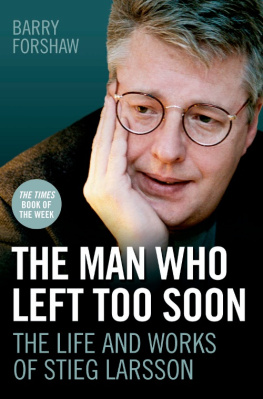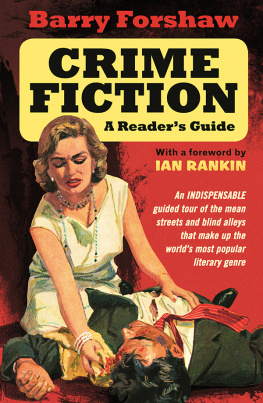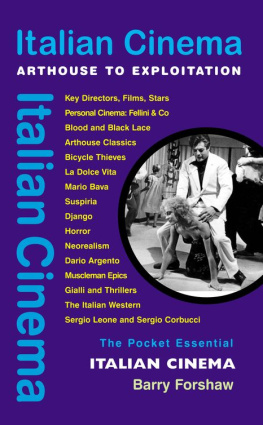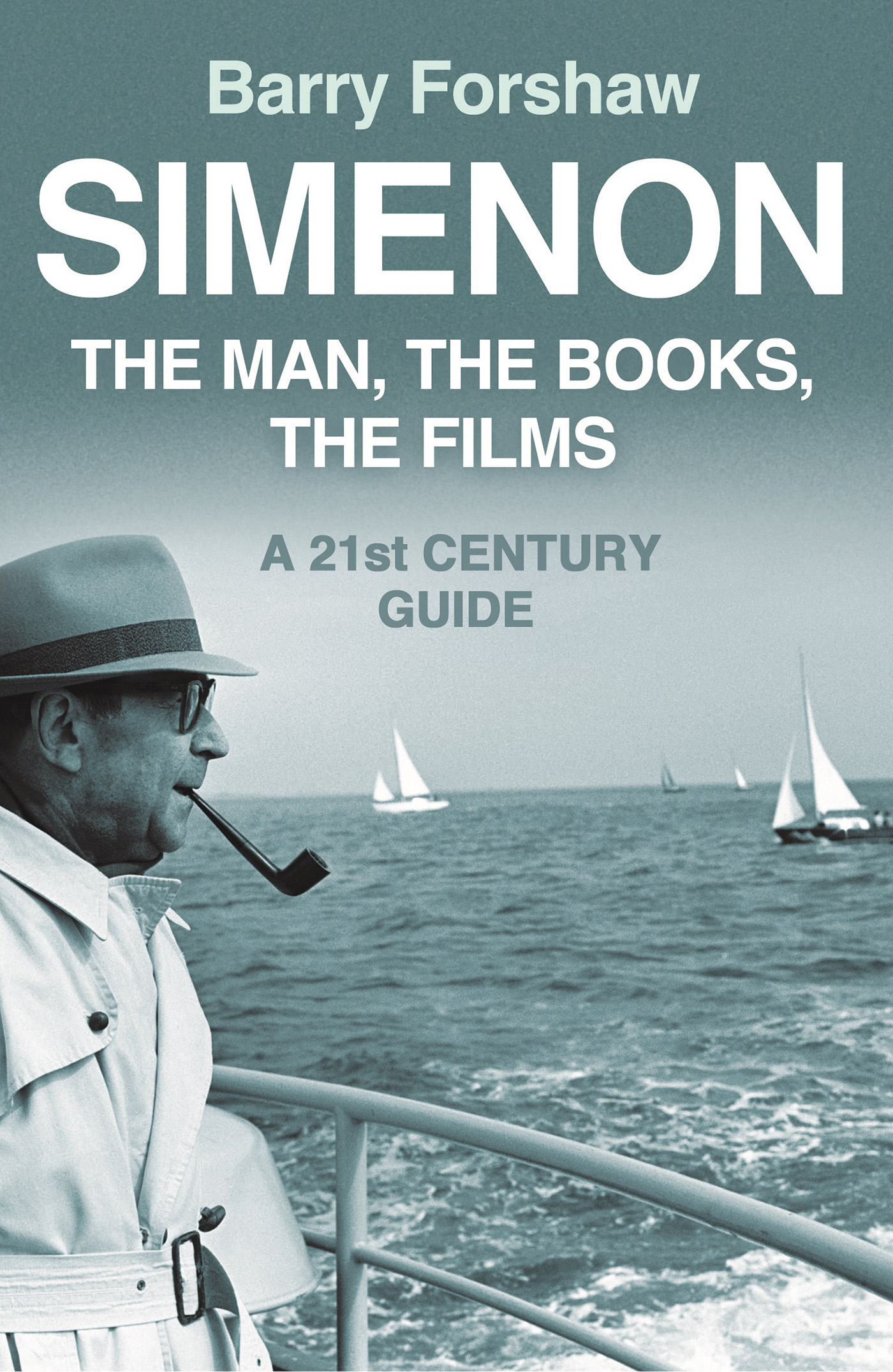CRITICAL ACCLAIM FOR BARRY FORSHAW
Entertaining and informative companion written by the person who probably knows more than anyone alive about the subject
TIMES
Essential reading for anyone seeking clues
GUARDIAN
Highly accessible guide to this popular genre
DAILY EXPRESS
Exemplary tour of the European crime landscape... Supremely readable
INDEPENDENT
Fascinating and well researched refreshing and accessible
HERALD
A work to read for pleasure and instruction and then to keep on the reference shelf
OBSERVER
Readers should start with Forshaws pocket guide to the genre
FINANCIAL TIMES
If you want to know who or what is the next big thing, get this book
EVENING STANDARD
FOREWORD
Georges Simenon created a furore worthy of the most bed-hopping of politicians with his declaration that he had had sex with over 10,000 women. He made the claim in January 1977 in a conversation with Fellini in the magazine LExpress to launch Fellinis film Casanova in France, but the jaw-dropping statement was met with scepticism. How had he written so many novels if his entire time seems to have been spent in carnal abandon? Simenon admirers were alienated by what seemed like boastfulness but, fortunately, its not necessary to approve of all a writers statements to admire his work. Leaving such things aside, by the time of his death in 1989, Simenon was the most successful writer of crime fiction in a language other than English in the entire field, and his most iconic creation, the pipe-smoking police inspector Jules Maigret, had become an institution. At the same time, his non-Maigret standalone novels are among the most commanding in the genre (notably The Snow Was Dirty , an unsparing analysis of the mind of a youthful criminal). Simenon created a writing legacy quite as substantial as many more serious French literary figures; Andr Gides assessment of him as the greatest French novelist of our times may have been hyperbolic, but as a trenchant picture of French society, Simenons books collectively forge a fascinating analysis.
But at this point, lets establish what this book isnt. Its not designed as a straightforward biography I felt that a sort of collage approach might fruitfully present a picture from various angles (the authors life and character, his remarkable literary achievements, and the many adaptations of his work in other media). To that end, apart from my own essays, I have interviewed a variety of people who either worked with him or worked on his books: publishers, editors, translators, and other specialist writers, some of whom I commissioned to write pieces on Simenon in the past for various books and magazines (notably Crime Time , which I have edited in both print and online formats). My hope is that all of this will create a prism through which to appreciate one of the most distinctive achievements in the whole of crime fiction.
Musical Chairs and Titles
At the heart of this study is a bibliography created by the late David Carter, which remains a very well-researched piece of work. Inevitably, of course, some of Davids information reflected the time when it was written (2003), so I have customised a great many things not least adding newly translated titles for books that have appeared previously under different monikers. A good example might be the first Maigret, originally published in 1931 as Pietr-le-Letton but subsequently appearing as both Maigret and the Enigmatic Lett and The Case of Peter the Lett , and which is now available under the more suitable title of Pietr the Latvian (in a translation by David Bellos). My yardstick in terms of titles has been the impressive Penguin initiative of new translations, which are unlikely to be bettered. I have kept some of Davids plot synopses along with some of his value judgements, although, here again, I have added and subtracted extensively. Finally, though, as a starting point for this book, Davids work has been extremely useful.
SIMENON: THE MAN
A One-Man Trojan Horse
Crime in translation may have achieved massive breakthroughs in the twenty-first century, but long before this trend, Simenon was a one-man Trojan horse in the field. Georges Joseph Christian Simenon was born in Lige on 13 February 1903; his father worked for an insurance company as a clerk, and his health was not good. Simenon found like Charles Dickens in England before him that he was obliged to work off his fathers debts. The young man had to give up the studies he was enjoying, and he toiled in a variety of dispiriting jobs (including, briefly, working in a bakery). A spell in a bookshop was more congenial, as Simenon was already attracted to books, and his first experience of writing was as a local journalist for the Gazette de Lige . It was here that Simenon perfected the economical use of language that was to be a mainstay of his writing style; he never forgot the lessons he acquired in concision. Even before he was out of his teenage years, Simenon had published an apprentice novel and had become a leading figure in an enthusiastic organisation styling itself The Cask ( La Caque ). This motley group of vaguely artistic types included aspiring artists and writers along with assorted hangers-on. A certain nihilistic approach to life was the philosophy of the group, and the transgressive pleasures of alcohol, drugs and sex were actively encouraged, with much discussion of these issues and, of course, the arts were hotly debated. All of this offered a new excitement for the young writer after his sober teenage years. Simenon had always been attracted to women (and he continued to be enthusiastically so throughout his life) and in the early 1920s he married Rgine Renchon, an aspiring young artist from his home town. The marriage, however, was troubled, although it lasted nearly 30 years.
From the City of Lights to the USA
Despite the bohemian delights of the Cask group, it was of course inevitable that Simenon would travel to Paris, which he did in 1922, making a career as a journeyman writer. In these early years, he published many novels and stories under a great variety of noms de plume .
Simenon took to the artistic life of Paris like the proverbial duck to water, submerging himself in all the many artistic delights at a time when the city was at a cultural peak, attracting migr writers and artists from all over the world. He showed a particular predilection for the popular arts, starting a relationship with the celebrated American dancer Josephine Baker after seeing her many times in her well-known showcase La Revue Ngre . Baker was particularly famous for dancing topless, and this chimed with the note of sensuality that was to run through the writers life. As well as sampling the fleshpots, along with more cerebral pursuits, Simenon became an inveterate traveller, and in the late 1920s he made many journeys on the canals of France and Europe. There was an element of real-life adventure in Simenons life at this time, when he became an object of attention for the police while in Odessa (where he had made a study of the poor). His notes from this time produced one of his most striking novels, The People Opposite/Les Gens den Face (1933), which was bitterly critical of the Soviet regime, which the author saw as corrupt. As the 1930s progressed, Simenon temporarily abandoned the police procedural novels featuring doughty Inspector Maigret (his principal legacy to the literary world), but he did not neglect his world travels, considering that the more experience of other countries he accrued, the better a writer he would be.













